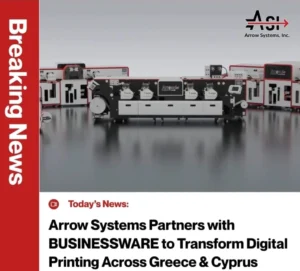Table of Contents
Label Finishing Techniques
Label finishing techniques refer to the various processes that are applied to labels after they have been printed in order to enhance their appearance and durability.
Some common label finishing techniques include embossing, foil stamping, and lamination. In this blog post, we will explore each of these techniques in detail, including how they are applied, their benefits, and when they are most commonly used.
Embossing
Embossing is a label finishing technique that involves pressing an image or design into the surface of the label material, creating a three-dimensional effect.
This is done using a printing press equipped with a male and female die, with the male die carrying the image or design that is to be embossed and the female die providing the opposing surface. When the two dies are pressed together, the material is pushed into the female die, creating the raised or indented image on the surface of the label.
One of the main benefits of embossing is that it adds a sense of depth and dimensionality to the Label, making it more visually appealing and eye-catching. It can also be used to add a tactile element to the label, allowing customers to feel the raised or indented image.
Embossing is often used to highlight specific areas of the label, such as a logo or product name, and can be combined with other printing techniques, such as foil stamping or printing, to create a more unique and striking label.
Foil Stamping
Foil stamping is another popular label finishing technique that involves applying a thin layer of metallic or holographic foil to the surface of the label using heat and pressure.
This is done using a printing press equipped with a foil stamping die and a roll of foil, with the die carrying the image or design that is to be stamped and the foil providing the metallic or holographic finish.
When the two are pressed together, the heat and pressure cause the foil to adhere to the label material, creating a metallic or holographic finish on the surface of the label.
Foil stamping is a great way to add a touch of luxury and sophistication to a label, as the metallic or holographic finish is eye-catching and visually appealing.
It is often used to highlight specific areas of the label, such as a logo or product name, and can be combined with other printing techniques, such as printing or embossing, to create a more unique and striking label.
Foil stamping is also a great way to add a tactile element to the label, as the metallic or holographic finish can be felt as well as seen.
Lamination
Lamination is a label finishing technique that involves applying a thin layer of film to the surface of the label in order to protect it and enhance its durability. This is done using a laminating machine, which consists of two rollers that are heated to a high temperature.
The label is passed through the machine between the two rollers, with the film being applied to one side of the label. The heat and pressure from the rollers cause the film to adhere to the label material, creating a protective layer on the surface of the label.
There are several benefits to laminating a label. First and foremost, it helps to protect the label from damage, such as scratches, scuffing, and fading. This is especially important for labels that will be subjected to harsh conditions, such as extreme temperatures, moisture, or UV radiation.
Lamination also enhances the overall durability of the label, making it more resistant to wear and tear. In addition, lamination can give the label a professional, finished look and feel, making it more appealing to customers.
So, when should you use each of these label finishing techniques? The answer depends on your specific needs and goals. If you want to add some finishing options to your die cutting process, these are some of the best to add.
Some other options to consider adding to your label finishing systems would be spot varnish, as well as spot foil. Having the ability to accentuate labels with embossed image or metallic foils or different foil color will change your business entirely.
Whether you are a label printer or a wine maker, understanding how to make your label pop on the shelves. Using different types of material or different digital printing and finishing options you can add a degree of complexity to your labels. This is turn will help to grab customer attention and hopefully sell more products!
Explore Our Memjet Duraflex Solutions here
Trending Post
Recent Blog Post

Breaking News: Arrow Systems Partners with BUSINESSWARE to Transform Digital Printing Across Greece & Cyprus

Sid Sistemas de Impresión in Spain Installs ArrowJet Aqua 330R and DPR Taurus to Bolster Label Production

